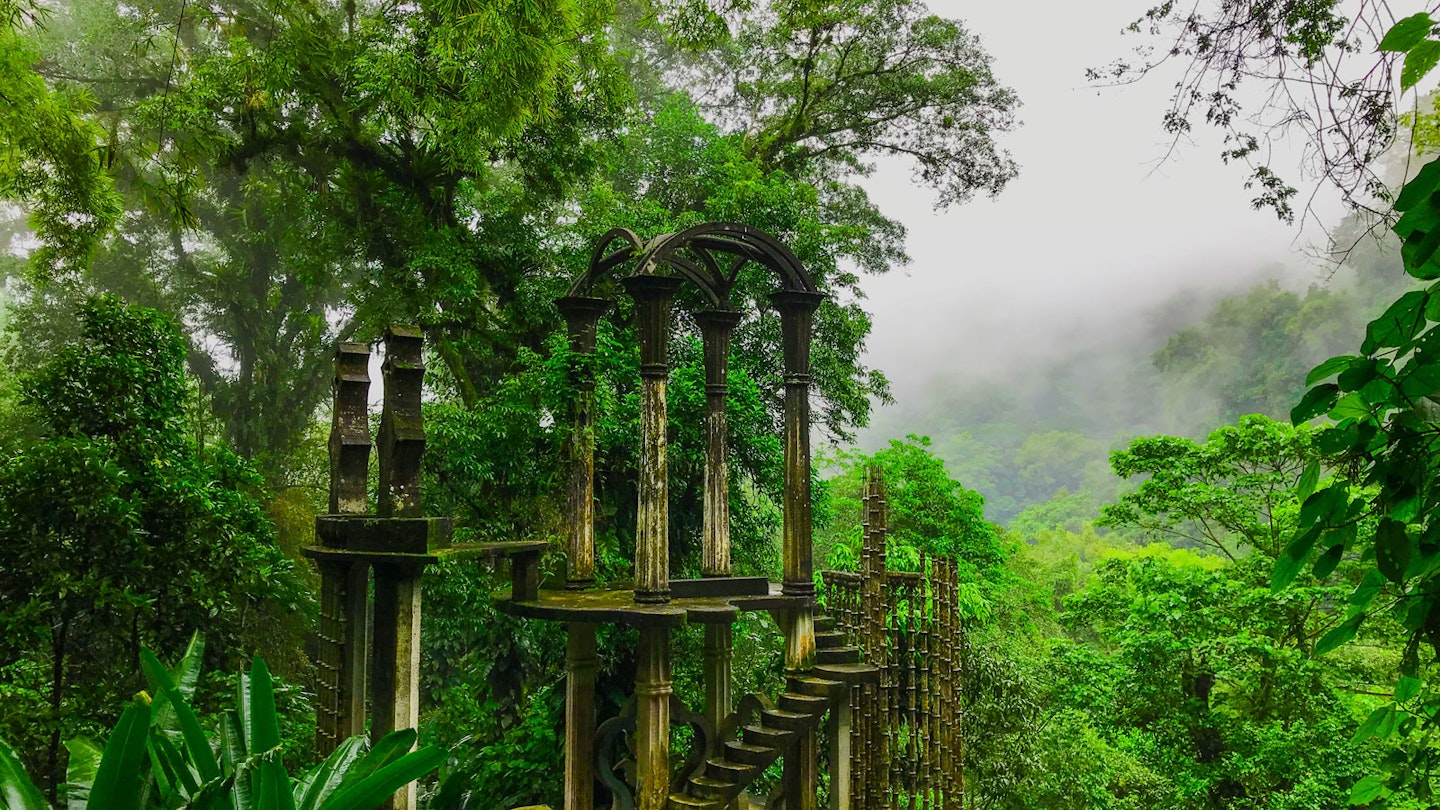Mexico, according to André Breton, is ‘the most surrealist country in the world.’ As a founding contributor to the artistic movement, Breton would know. Heavily influenced by Freud’s psychoanalytic theories, surrealist artists nourished their creativity from dreams and untethered thoughts, believing in freeing the unconscious mind from rational constraints.
A recent surge in interest in surrealist art, specifically the celebrated artist Leonora Carrington, has spurred the opening of two museums in the state of San Luis Potosí. This development complements the enthralling sculpture garden, Las Pozas, in Xilitla. With these three notable attractions, San Luis Potosí has emerged as Mexico’s premier surrealist destination.
Edward James’ Sculpture Garden: A Wonderland in Xilitla
During the 1930s and 1940s, many European artists and intellectuals sought refuge from war in Mexico, and surrealism flourished. Edward James, a poet and patron of the arts, settled in La Huasteca Potosina, a tropical region in San Luis Potosí known for its stunning waterfalls and lush landscapes. In this pristine environment, he built his version of the garden of Eden filled with structures that are both fascinating and whimsical.

During a visit to Mexico, James found himself surrounded by butterflies while bathing in a river and took it as a sign to purchase property there. Initially, James aimed to create a garden filled with orchids, his favorite flowers. However, after a harsh winter decimated his precious blooms, he opted to build dreamlike structures in the jungle that could withstand the elements. As a result, the enchanting surrealist playground of Las Pozas (the Wells) came to fruition.
Concrete orchids, snakes symbolizing the seven deadly sins, and a bamboo palace all coexist amid waterfalls, natural pools, and a flowing river. Bridges and spiral staircases lead nowhere, intertwining with the lush jungle. Edward James’ sculpture garden is, quite literally, the stuff of dreams—his dreams. Construction ceased upon his death in 1984, leaving behind unfinished structures like the aptly named ‘House with three floors that could have been five,’ which only adds to the whimsy.

Visiting this lush garden and discovering otherworldly structures ensconced in nature evokes the feelings seasoned explorers must have encountered when unearthing ancient archaeological sites. There’s something mystical about observing how the jungle appears to reclaim the surrealist structures for itself.
A Surreal Home in the Capital for Leonora Carrington’s Surrealist Art
Leonora Carrington frequently visited her friend and benefactor Edward James at Las Pozas, even painting a mural on the grounds. Her life story is as captivating as her artworks. Born into an aristocratic British family, she intertwined her life with the surrealist movement early on. At just 20, Carrington met the much older (and married) Max Ernst, and the two quickly became lovers and collaborators. While living in France, Ernst was taken by the Gestapo, and Carrington fled to Spain, which led to her despair. Ultimately, her family had her committed to an asylum. After escaping, she fled Europe by marrying a Mexican diplomat. Although this marriage was short-lived, Carrington embraced Mexico as her home until her death at age 94.
Spring of 2017 marked Carrington’s 100th anniversary, causing a spike in interest in her magnificent contributions. In March 2018, the first-ever space entirely dedicated to her life and art opened in the Centro de las Artes in San Luis Potosí city. Housed in a former state penitentiary, the Centro de las Artes has been revitalized into a vibrant center for arts and culture. The Museo Leonora Carrington stands as an internationally recognized highlight of this center.

This contemporary space presents visitors with a rich collection of Carrington’s bronze sculptures. Fantastical birds rowing boats that merge into their forms, a human-like figure with the head of a deer imploring the sky with silent requests, and an alien-like creature with two eagle heads sprouting from its hips can all be found in this museum. What used to be prison cells now houses a myriad of Carrington’s sculptures, paintings, drawings, and jewelry, whimsical creations that echo Celtic and pre-Hispanic traditions.
A Surrealist Trifecta with the Opening of the Second Leonora Carrington Museum
A second location of the Museo Leonora Carrington opened its doors in October 2018 in Xilitla, nicely complementing Edward James’ sculpture garden.
While the collection primarily features Carrington’s sculptures, the museum also illuminates periods of her life with enlarged photographs and informative timelines. Notable highlights include a wall adorned with 25 bronze masks, a sculpture of an alien with a beautifully elongated head, and a figure resembling a bench with faces on both sides. The three-story museum building is modern, stylish, and includes spaces for workshops, a rooftop café, and a shop offering Carrington-inspired merchandise.

The dual museums in Xilitla and San Luis Potosí city owe their existence to Pablo Weisz—one of Carrington’s two sons—who donated the rights to his mother’s dreamlike pieces.
Make It Happen
La Huasteca Potosina is a vast and rugged area with mountain ranges weaving through it. Although driving can be challenging at times, the town of Xilitla is a 5-hour drive from the capital of the eponymous state, San Luis Potosí. Local tour companies like Auténtico San Luis offer personalized experiences for both adventure seekers and art lovers, saving you the hassle of navigating winding mountain roads that are best avoided alone. Alternatively, buses operate daily from San Luis Potosí to Ciudad Valles, where connecting transport to Xilitla is also available.




